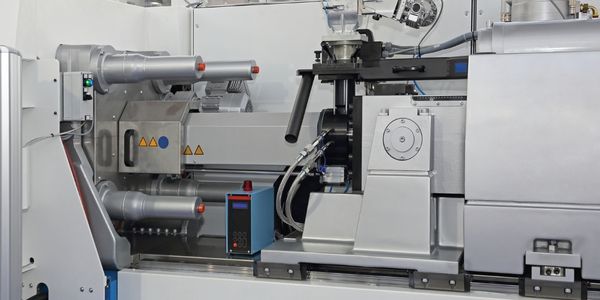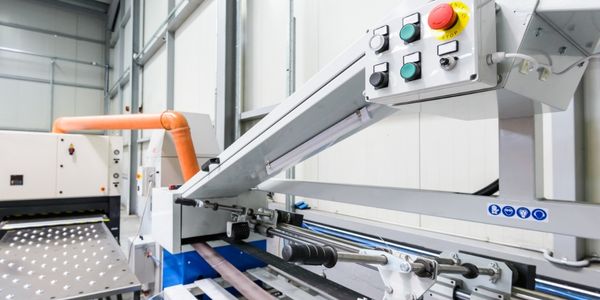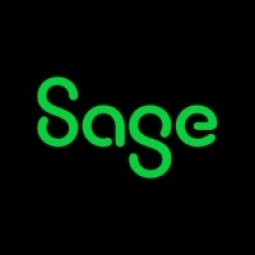Customer Company Size
SME
Region
- America
- Asia
Country
- Japan
- United States
Product
- Sage 100 Advanced ERP
- General Ledger
- Accounts Payable
- Accounts Receivable
- Inventory Management
Tech Stack
- ERP Software
- Inventory Management Software
- Financial Management Software
Implementation Scale
- Enterprise-wide Deployment
Impact Metrics
- Productivity Improvements
- Cost Savings
Technology Category
- Functional Applications - Enterprise Resource Planning Systems (ERP)
- Functional Applications - Inventory Management Systems
Applicable Functions
- Discrete Manufacturing
- Logistics & Transportation
Use Cases
- Inventory Management
- Manufacturing System Automation
Services
- System Integration
- Software Design & Engineering Services
About The Customer
Yamada America is the U.S. subsidiary of Yamada Corporation, a Japanese heavy industrial pump manufacturer. The company was founded in 1986 and sells 4,000 different products and 16,000 parts for those products. Its customers include major corporations such as Motorola, Intel, and DuPont. The company has been experiencing rapid growth, with an annual increase of 25-30 percent for three consecutive years. Despite the challenges, the company has managed to expand and now operates from a 40,000-square-foot office and warehouse. The company has three locations and employs 25 people in the U.S.
The Challenge
Yamada America, a U.S. subsidiary of a Japanese heavy industrial pump manufacturer, was experiencing rapid growth, with an annual increase of 25-30 percent for three consecutive years. To manage this growth, the company decided to switch from Sage 100 ERP for DOS to a Windows-based system in 1998. However, the new software promised by a salesman turned out to be a disaster. The installation process took over four months and disrupted all aspects of the company's operations, including accounts payable, advanced consolidation, general ledger, and inventory. Even after the installation, the system problems persisted, with hardware breaking down and computer screens freezing multiple times a day. The situation was so bad that two employees quit due to the excessive overtime caused by the computer problems.
The Solution
After the disastrous experience with the new software, Yamada America decided to return to Sage 100 ERP. The Sage 100 ERP Inventory Management module proved invaluable in managing the company's product flow. The Purchase Order module simplified inventory control by calculating how many parts needed to be ordered to keep each product in stock and providing a useful product turnover and reorder report. Data was never entered twice. When Sales Orders were entered, Sage 100 ERP automatically removed the parts from inventory, printed the order in the warehouse, and fed the results into purchase orders, invoicing, and shipping. The system also provided comprehensive reports on sales, profits, aging, and inventory, all viewable on one screen. The company did not have to customize any of the reports as all it needed came standard with Sage 100 ERP.
Operational Impact
Quantitative Benefit

Case Study missing?
Start adding your own!
Register with your work email and create a new case study profile for your business.
Related Case Studies.

Case Study
Plastic Spoons Case study: Injection Moulding
In order to meet customer expectations by supplying a wide variety of packaging units, from 36 to 1000 spoons per package, a new production and packaging line needed to be built. DeSter wanted to achieve higher production capacity, lower cycle time and a high degree of operator friendliness with this new production line.

Case Study
Robot Saves Money and Time for US Custom Molding Company
Injection Technology (Itech) is a custom molder for a variety of clients that require precision plastic parts for such products as electric meter covers, dental appliance cases and spools. With 95 employees operating 23 molding machines in a 30,000 square foot plant, Itech wanted to reduce man hours and increase efficiency.

Case Study
Fully Automated Visual Inspection System
Tofflon has developed a fully automatic machine that uses light to inspect vials, medicine bottles, or infusion containers for glass fragments, aluminum particles, rubber grains, hairs, fibers, or other contaminants. It also detects damaged containers with cracks or inclusions (microscopic imperfections), automatically removing faulty or contaminated products. In order to cover all production processes for freeze-dried pharmaceuticals, Tofflon needed to create an open, consistent, and module-based automation concept.

Case Study
Hospital Inventory Management
The hospital supply chain team is responsible for ensuring that the right medical supplies are readily available to clinicians when and where needed, and to do so in the most efficient manner possible. However, many of the systems and processes in use at the cancer center for supply chain management were not best suited to support these goals. Barcoding technology, a commonly used method for inventory management of medical supplies, is labor intensive, time consuming, does not provide real-time visibility into inventory levels and can be prone to error. Consequently, the lack of accurate and real-time visibility into inventory levels across multiple supply rooms in multiple hospital facilities creates additional inefficiency in the system causing over-ordering, hoarding, and wasted supplies. Other sources of waste and cost were also identified as candidates for improvement. Existing systems and processes did not provide adequate security for high-cost inventory within the hospital, which was another driver of cost. A lack of visibility into expiration dates for supplies resulted in supplies being wasted due to past expiry dates. Storage of supplies was also a key consideration given the location of the cancer center’s facilities in a dense urban setting, where space is always at a premium. In order to address the challenges outlined above, the hospital sought a solution that would provide real-time inventory information with high levels of accuracy, reduce the level of manual effort required and enable data driven decision making to ensure that the right supplies were readily available to clinicians in the right location at the right time.

Case Study
SAP Leonardo Enabling Rocket Science
At times, ULA has as many as 15 different operating systems dedicated to overlapping processes, such as rocket design, testing, and launch. Multiple systems created unnecessary costs and unwanted confusion among workers at offices, factories, and launch sites in different location. In order to improve collaboration and transparency during vital activities that directly influence mission success, ULA wanted to improve data sharing and streamline manufacturing processes.




